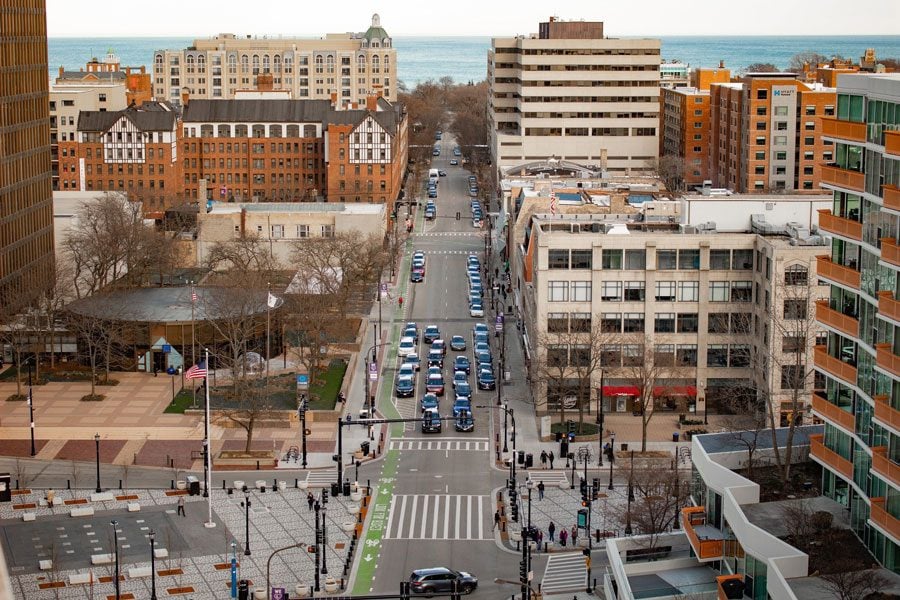Study says gentrification in Evanston does not exist, though residents think otherwise
Evan Robinson-Johnson/Daily Senior Staffer
Downtown Evanston. A recent study shows that gentrification hasn’t affected Evanston, but some residents disagree.
April 19, 2019
According to a recent study by the National Community Reinvestment Coalition, no area in Evanston has experienced gentrification between 2000 and 2013.
The study considered neighborhoods gentrified, if in 2000, they were below the 40th percentile of household incomes and home values in the metropolitan area. In 2000, the cut off for household income was $61,121 and for home value it was $183,040.
The only region of Evanston considered gentrified was an area in the 8th Ward, Census Tract 8102, which had a median home value of $182,017 and household income of $59,830 in 2000, according to the study’s analysis of U.S. Census Bureau data.
The study defines gentrification as a process when an influx in investment leads to rising home values, incomes and education levels. This displaces what are usually communities of color and replaces them with wealthy, white residents.
The criteria the study used for gentrification was strict — requiring an increase in median home value to the 60th percentile and at least a 5 percent decline in the population of a racial or ethnic group — leading researchers to acknowledge that the study likely undercounted the number of gentrified areas.
The median home value in that area dropped to just above $177,000. Though the population of all racial and ethnic groups fell, a larger share of the Hispanic and black population was affected.
Evanston residents and sisters Renee and Tina Paden are landlords at Paden Properties. Renee Paden said she has seen an extremely large change through gentrification in the last 20 years.
“We can point out specific examples of gentrification,” she said. “We can go through Evanston house by house and point to areas that were low income and now are not.”
Tina Paden said her family has seen the effects of gentrification on their block — they are the last house standing amongst luxury apartment complexes like E2 Apartments. She has seen gentrification on almost every street, from Garnett through Jackson.
“There is no way that anyone that is low- or mid-income or even upper-middle can pay,” Tina Padden said. “So what is happening to us, as landlords, we are having to raise our rent because the property tax go through the roof.”
The census tract that includes Northwestern’s campus saw a 27 percent increase in residences with Bachelor’s degrees, a 17 percent increase in home value and a 26 percent increase in household income between 2000 and 2010, according to the study.
Chicago resident Melissa Pietrzak, who works in Evanston, said Evanston has always been wealthy, and the city appears to be gentrified. Pietrzak said maybe she defined gentrification differently, and associated the term with change over time rather than an area being wealthy.
The study also looked at various other cities throughout the United States, and concluded that gentrification and displacement of long-time residents was most intense in the nation’s biggest cities, but rare in most other places. In Chicago, where large swaths of the city’s 866 census tracts were found eligible for gentrification, roughly two dozen were found to have been gentrified, the study stated.
D. Vincent Thomas lives in Evanston and was surprised to hear the results of the study. For him, it’s important to consider what the baseline status is, as the middle class in a place like Silicon Valley looks very different than in Evanston.
“I don’t see how anybody can make the argument this area is completely void of gentrification. In what world?” Thomas said.
Email: [email protected]
Twitter: @SamHeller5


